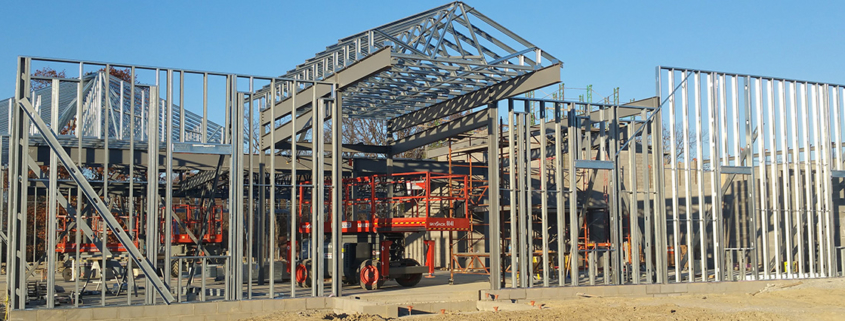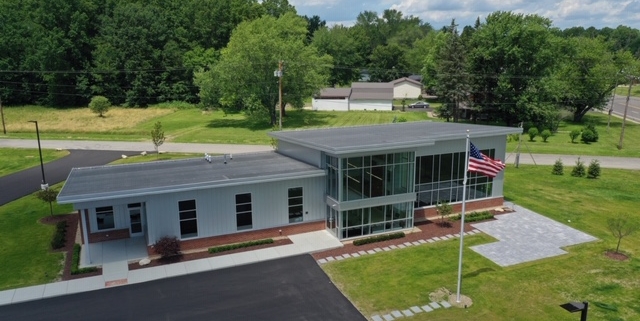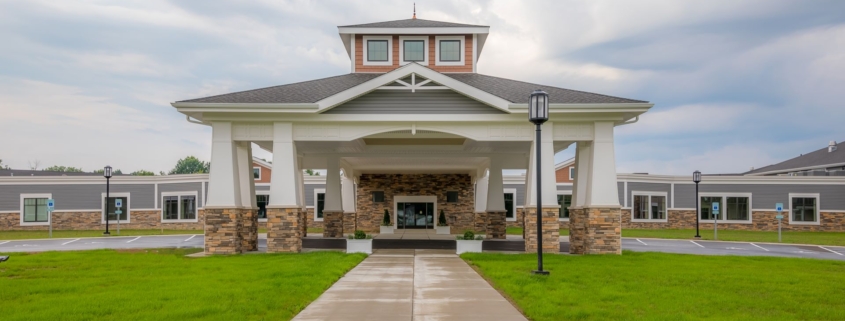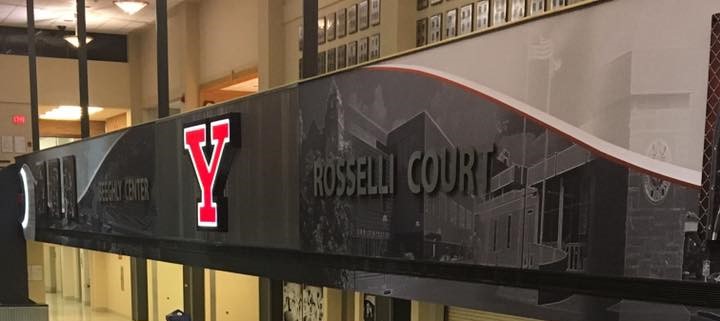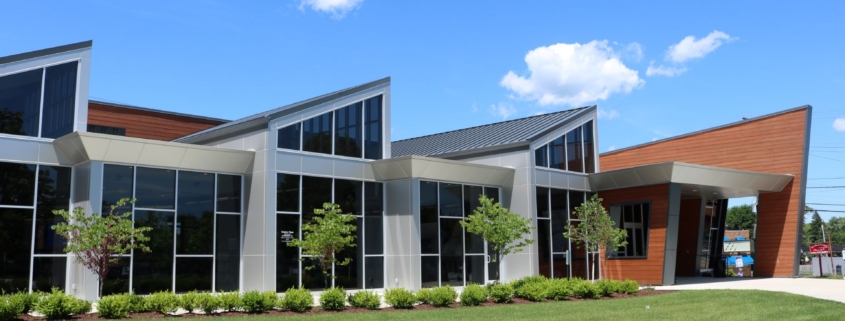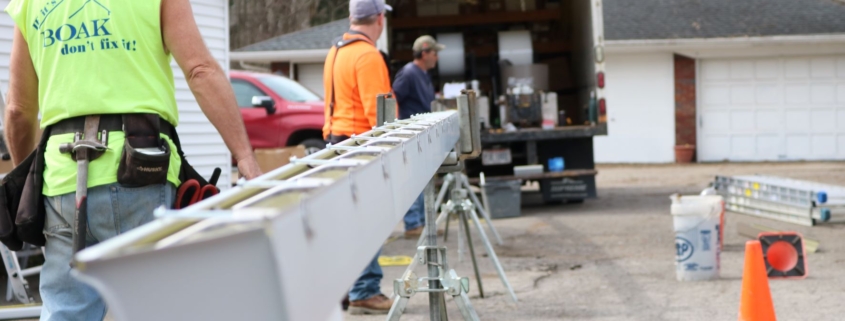The Builders Association broke ground in 2018 on a new, $1.5 million, 4,000+ square-foot office building. That news, alone, is noteworthy because it is another project that will provide economic development in the region. What made this project unique is how the structure itself would be a symbolic representation of the Association’s history, its critical role in today’s construction community, and its commitment to the region’s future.
The structure was built on existing Builders property – right in front of the current Builders offices and much closer to the curb along Route 193 in Vienna. On top of being economically smart, remaining on the same plot of land that The Builders have based operations from since its inception is a purposeful tribute to the Association’s successful history.
Key members of this project joined together to break ground at the event. They are, left to right: Mark Zeidenstein, L. Calvin Jones & Co.; Jim Santini, Jim Santini Builder Inc.; Sam Boak, Boak & Sons; Joe DeSalvo, DeSalvo Construction; Jeff Mason, Youngstown Tile and Terrazzo Co.; Jerry Zreliak, I.C. Electric, Inc.; Jeff Donatelli, Donatelli Electric; Patrick Lankey, Axiom Architects; Robert Donatelli, Donatelli Electric; and Kevin Reilly, The Builders.
The Builders Association also celebrated its 50th year in 2019, making this building, which was completion in June – a living milestone.
Architecturally, the building is a mix of large windows, metal paneling and brick, while inside features open office space, conference rooms, and plenty of natural lighting and storage. exposed beams, ceilings and ductwork – another strategy designed to demonstrate the capabilities of the 15 skilled trades that Association Members service.
As many members of The Builders as possible were used to complete the work, with DeSalvo Construction as general contractor and Axiom as the architect.
“We host a lot of meetings, seminars, training sessions and events in our offices, which creates a steady flow of traffic. We wanted to design the new building to showcase the type of workforce our members bring to a job site,” said Reilly.
Buildings & Grounds Committee Chair Jerry Zreliak of I.C. Electric explains the project to attendees
Off to a Great Start
The groundbreaking ceremony was attended by civic leaders, architects, the media, and members of The Builders. Kevin Reilly, The Builders’ Executive Vice-President, and Patrick Lankey, principal of Axiom Architects, presented the project’s plans, expected outcomes, and benefits of the facility to attendees. The traditional “first dig” included key Builders members who are helping to spearhead the project. The event attracted media attention as well. Take a look:
WFMJ.com
WKBN.com
Youngstown Business Journal
Stay in the Loop
To keep members, the industry and the public informed about the progress of its new building, look for a dedicated section on the home page of our website (TheBuildersOnline.com) to track the project. There you will see updated photos, feature articles, and other news about this special project.
“The Builders Association has been an integral part of the region’s construction industry for five decades, and we intend to remain in that role for years to come,” Reilly added. “This new building will serve as the perfect transition as we begin our next 50-year journey.”

